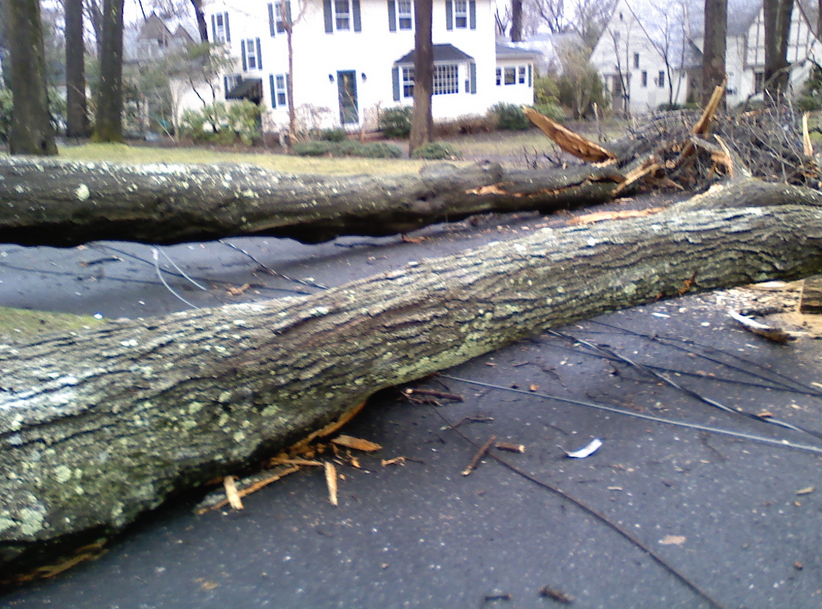Structural Damage by Fallen Tree After a Storm

One of the most common causes of structural damage after a storm is because of a fallen tree.
Since trees can topple in a matter of seconds, due to either heavy rain or strong winds, your home can be at serious risk for expensive, life-threatening destruction.
As a homeowner, it’s crucial to understand proper tree care and maintenance to ensure your trees stay sturdy during this season’s storms.
Find out the most common questions about tree damage from homeowners, including how to check if your insurance covers any tree damage repair costs, with information from the experts at ServiceMaster Restore®.
Will My Homeowner’s Insurance Cover Fallen Trees?
A fallen tree, also known as a peril in insurance terms, may be covered by your policy.
If the tree fell because of extremely high winds, heavy rainfall or other stormy weather, your homeowner’s insurance will most likely cover the cost of any damages caused to your home, shed or garage.
However, if your insurance can prove that the tree fell because of negligent maintenance, you won’t be covered.
Typically, debris cleanup caused by a fallen tree is typically not covered by your insurance, especially if it didn’t cause any structural damage.
If your neighbor’s tree falls on your property, their policy should be responsible for caring for the repair costs. When in doubt, contact your own insurance agent to get the full details of what kind of tree damage repair is covered under your own specific policy.
How Can I Determine if My Tree is Healthy?
Strong, healthy trees have less risk of falling during a storm.
Unhealthy trees generally show some of these signs and symptoms:
- Look for large, visible cracks in the tree’s trunks and branches.
- Be aware of potential rotting and look for things like fungus or mold on the bark of the tree.
- Trees and branches that are leaning at a sharp angle are at risk of toppling over or at risk for branches breaking off.
- Older trees or hollowed out sections of your tree should be assessed by a local arborist to determine if it should be removed.
If your tree has any of the above issues, take care of them immediately.
Usually, a simple trim, removal of dead or diseased limbs, or pruning branches can keep your tree in relatively good condition.
If your tree is beyond repair, your arborist may recommend completely removing it to avoid any potential damage.
What Should I Do if My Tree Looks Unhealthy?
Once you’ve discovered that a tree near your home is damaged, rotting or old, it’s essential that you take the proper steps to correct the problem before it affects your home.
The following steps can keep your tree in good condition:
- Trim cracked or dangling tree limbs, and prune any branches that are close to your structure.
- Have a professional inspect trees that appear to be leaning or those that are older and more prone to disease.
- Report tree limbs that are close to utility lines to your local power company.
- Never try to cut a tree down yourself without the help of an experienced tree removal service. Cutting down trees is a difficult task that can cause potential injury.
If your home has been affected by a fallen tree, contact your insurance agent immediately to begin the claims process.
Then, take videos and photographs of the damage to help your claim.
If you need help cleaning up the damage, contact ServiceMaster Restore®.
We have the proper tools and expertise to get your home back to normal as fast as possible.
